Mammals
Characteristics that identify mammals from other classes are:
- Mammal's feed their young on milk produced in the mammary glands
- Most give birth to live young
- Most have fur/hair covering their bodies
- Are able to maintain a constant internal body temperature
- Highly adaptable
Evolution
It is thought that mammals are descended from a group of reptiles known as therapsids, these small but active carnivores lived back in the Triassic period. Over this long period of time the distinguishing features between reptiles and mammals have become more evident, the skull shape has ranged dramatically and mammals have developed a far lighter skeleton. Another obvious difference is the alignment of the limbs; mammals usually have the limbs beneath their body whilst reptiles were on their sides, this allowed mammals to become faster and more agile. The fact mammals are able to maintain their body temperature could be a key feature that allowed them to outlive their reptile relatives and the dinosaurs; during the Mesozoic era the climate became alot colder and temperatures more variable and unpredictable. Dinosaurs and reptiles' bodies would shut down in extreme cold while mammals were able to go about they natural tasks and survive.
Another adaptation in mammals in the ability to hibernate, some species especially small species save their energy just as reptiles do. The body temperature drops, breathing slows right down and their metabolism becomes almost non-existant. They do not eat and rely heavily on fat reserves in their own bodies which they build up in the months running up to winter. the opposite of hibernation is aestivation which occurs during summer months when food is scarce.
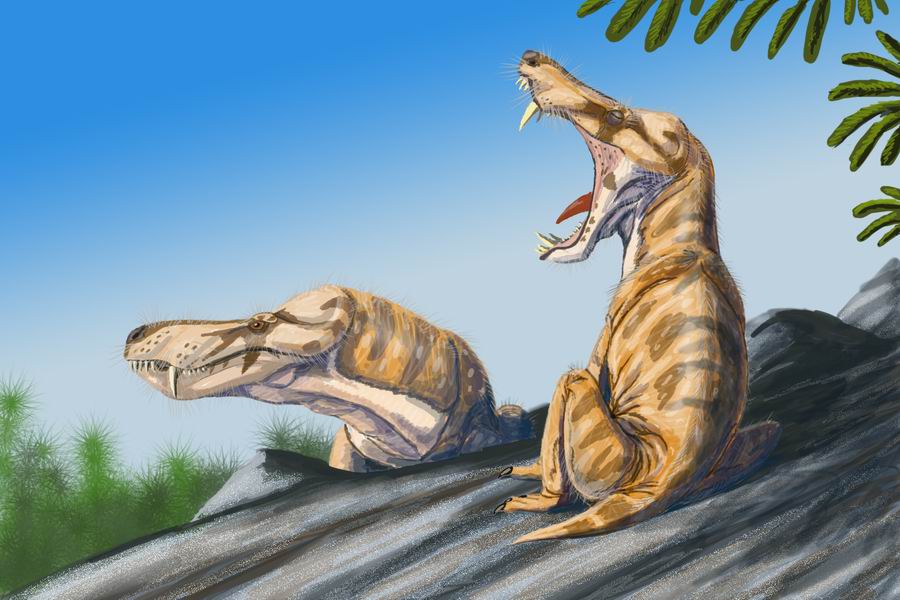
Anatomy
The most obvious differences between mammals and other vertebrates related to anatomy is the skull. Mammals are the only class who's jaw is hinged directly onto the skull whilst others have at least one other bone connecting the two. This direct connection along with the bottom jaw being one bone makes the jaws a powerful weapon and tool. Mammals unlike other species also have specialised teeth depending on their diet, they all have 3 different types of teeth: incisors which are used mostly for biting, canines which are used for gripping and ripping, and cheek teeth (premolars and molars) which grind food. The size and shape of each tooth varies with the diet of the species.
Most mammals with a few exceptions have moveable external ears (pinnae) to pinpoint sounds and funnel them into the eardrum where they are transmitted to the tiny bones in the inner ear and finally to the brain. A huge contrast in size can be seen between mammals for example the fennec fox has huge, dish-like ears whilst true seals have no pinnae.
The most noticeable part of a mammal's form is it's skin which consists of two layers: the thick, protective outer layer (epidermis) and the inner layer (dermis). Both layers of skin contain blood vessels, nerve-endings and glands, the glands in the dermis being the most unusual in the sense that the sebaceous (scent) gland releases chemicals that mammals use for communication. The mammary glands produce milk which mammals use to nourish their young, and the sweat glands along with the hair/fur play an important part in regulating their body temperature.
Mammals are the only creatures with a hair covering on their bodies. A single hair is formed by a rod of cells strengthened by the protein known as keratin. Hair can take a variety of forms that include whiskers, spines, prickles and even horns. The most common of these is fur which consists of an underfur and an outer protective guard coat, this protects the skin and gives the fur it's colouration. Whiskers and other forms of hairs are known to help with sensory functions.
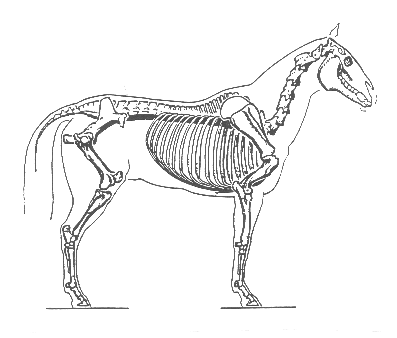
Reproduction
(For more information see Reproductive Adaptations)
Depending on their method of reproducing, mammals are usually divided into 3 distinct groups; in all three fertilisation occurs inside the female's body. The monotremes (duck-billed platypus, echidnas) lay eggs whilst the other two groups give birth to live young. The marsupials have no true placenta and are usually born underdeveloped at which point they crawl into the mother's pouch and attach to a teat where they complete their growth. The largest group however, is the placental mammals who's young fully develop inside a uterus inside the female's body. A placenta attaches the young to the mother which allows gas and nutrients to be exchanged, when finally born they are usually far better developed than marsupial young. All mammal young, no matter on their birth method are fed on milk released from the mammary glands, triggered by the birth. In all but the monotreme the young are fed from specialised teats and the milk, as well as providing nourishment also gives antibodies which prevent infection. Being fed on milk means the young do not have to find food for themselves and in doing so ensures a better rate of survival.
Litter sizes in mammals can vary greatly from just 1 to 22. Gestation (pregancy) periods can last 12 days to over 22 months.
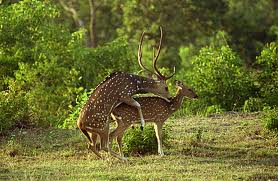
Temperature Control
Mammals are endothermic (warm blooded) and are able to maintain a constant body temperature allowing them to remain active even during extreme temperature lows or highs; this ability is a major reason why mammals can inhabit every major habitat are are the most widespread of all vertebrates except birds. Some species such as whales and seals (Antarctic) live in areas where the temperature plummets well below freezing for most of the year.
The hypothalamus (an area in the brain) monitors body temperature and adjusts it as necessary, this can be done by changing the metabolic rate, dilating or constricting blood vessels which carry heat to the skin's surface, raising or lowering body hair and trigger shivering or sweating. Another way mammals control their body temperature is by posturing their bodies in particular ways i.e monkeys hunch up in the cold while group living species will huddle together to share body warmth.
Behavioural patterns can also assist with temperature control; rodents in desert conditions will burrow underground during the heat of the day to keep cool; larger species will rest beneath trees and rock ledges or in depressions in the ground. It is thought that coat colouration can also assist in temperature control; desert living animals for example have fawn and other light colours while cold climate creatures will have dark fur to trap the heat in. Some creatures' furs will change colour with the seasons i.e. arctic fox which are grey during the summer and white during the winter.
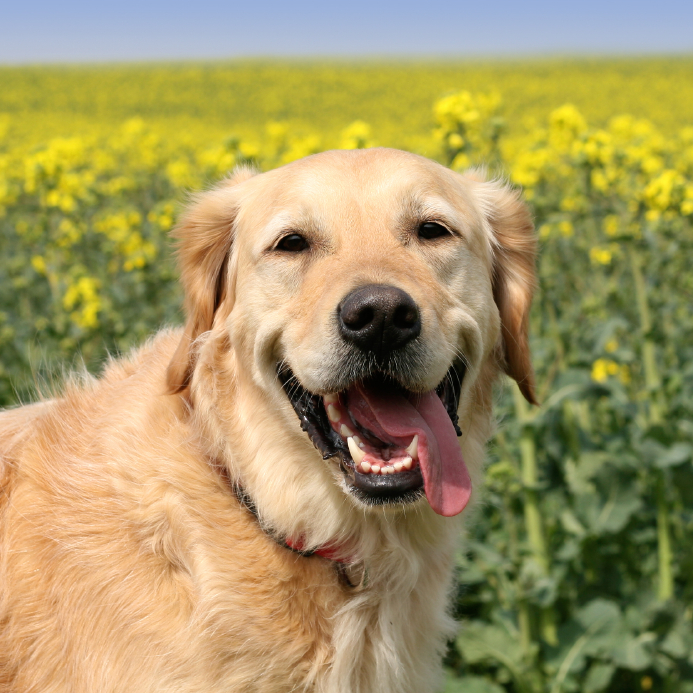
Feeding/Nourishment
To maintain a constant, high body temperature is "energy expensive" which means mammals have to consume a plentiful and nourishing diet.
Some mammals eat other creatures (carnivores) these mammals have simple digestive tracts; the proteins, fats and minerals in meat needing little to digest. Herbivores (eat vegetation) on the other hand have an array of bacteria to deal with the complex chains of carbohydrates in plants. The bacteria is usually stored in their multi-chambered stomaches or in a caecum (sac in the large intestine). The size of the mammal is usually good indication of it's chosen diet. Small mammals for example those that way less 500g have small bodies which allows heat to escape more easily, therefore they have to eat plenty and plants take far too long to digest so their creatures are often insectivores. Larger mammals have more heat which has less surface area to escape so have time to consume large vertebrates or plant matter, mammals over 500g are highly unlikely to be able to consume enough insects during waking hours to sustain themselves. The only large insectivores are those that feed on whole colonies of ants or termites.
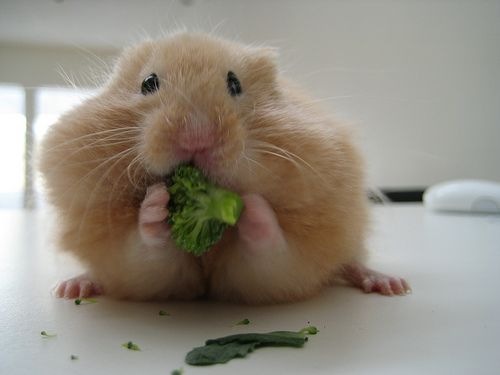
Social Structure
Mammals are known to communicate socially through scent either from glands in the face, feet or groin and scent in urine in faeces which are distributed around their territory containing sexual hormones. Body posture and facial expressions are also used along with touch and sound which can develop into messages. Socialisation begins when the mammal is born, signals between the mother and young while sucking and continues through the juvenile stage when young will play together and will learn to understand the behaviour of adults. Alot is learnt through play, young will experiment with adult activities such as hunting and fighting. Young will also explore and may display to each other, establishing a rank while young prevents conflict when they become older.
Some mammals only interact with others when mating or taking care of their young, but many will develop a temporary social group beyond these needs. Hoofed mammals form herds for safety against predators. Both social and solitary creatures require a territory; solitary creatures such as cats will defend their territory against those of the same sex for example a tigress will attack any female entering her territory but a tiger's territory will overlap several females' territories. Other mammals such as gibbons live in pairs or with their young and each pair occupies their own territory. In larger species such as seals and elephants they will often live in same sex groups most of the year round, related females forming social units while the males travel off alone. In these species the right to mate is often defended viciously, the largest and strongest individuals usually succeeding, allowing them to mate with any and as many of the females he chooses.
The final type of grouping is those of mixed sexes such as big cat prides and wolf packs. There is usually a dominant pair in a wolf pack which reserve the right to mate unless food, water and shelter is plentiful at which point the beta pair would be allowed to breed. Wolf cubs will often stay with their pack for years and assist the raising of their younger siblings and hunting. Lion prides usually have between 1 and 3 dominant males, females and young of both sexes, when the young mature they are often chased out of the pride.
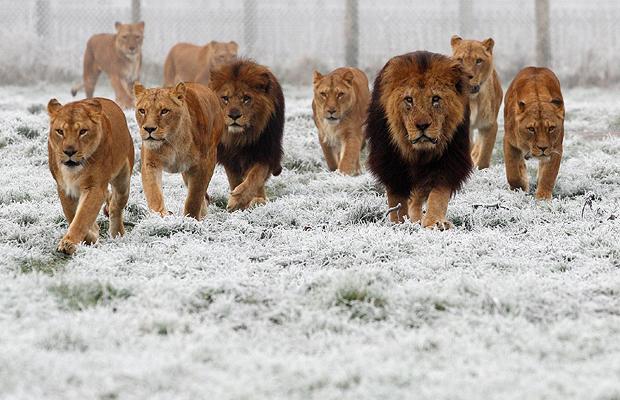
Locomotion/Movement
Mammals have developed several ways of moving relating to the habitat which they reside. Quadrupedal (4-footed) is usually the most common gait while others such as the kangaroo are bipedal (2-footed). As they move, the way the foot contacts the ground varies in 1 of 3 ways. Plantigrade mammals i.e. bears keep the heel bone (cacaneum), metapodials and toes (digits) on the ground. Digitigrade mammals i.e. dogs move with only the digits touching the ground almost like their are tip-toeing. Unguligrade mammals i.e. horses walk and run on the tip of each digit. Movement is often related to the lifestyle of the particular mammal. Predators for example often require short, sudden bursts of speed to catch their prey and have flexible spines. In the cheetah for example the spine is seen to coil and uncoil during motion, assisting with propelling the predator forward. Prey species are the complete opposit; they have a rigid back and the lower sections of the limbs are lengthened to help with endurance and the muscles are concentrated close to the body.
Over time mammal's limbs have also developed into wings, flippers and feet and hands that can grasp objects. This helped bats to fly, whales and dolphins to swim and primates to live in the trees.
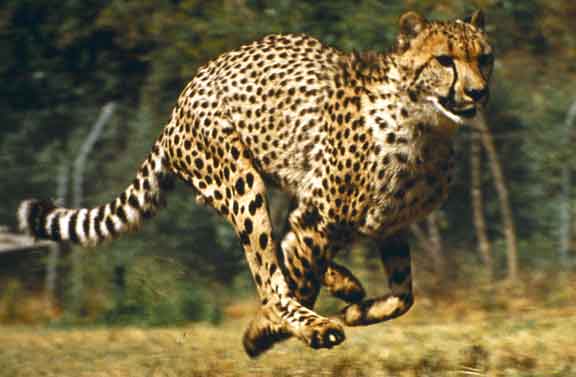
Aquatic Mammals
There are three groups of mammals that have become specialised and adapted to live in water. They have developed stream-line bodies to cut down on friction, have the ability to hold their breaths for a long period of time and have flippers and strong tails. The most specialised and largest group are the whales and dolphins who have lost their body hair to live beneath the water. Seals and sea lions like whales rely on fat preserves in their body to keep warm but have also kept their fur which is kept water proofed by an oily substance released from the sebaceous glands. Manatees and Dugongs live in warm coastal waters and are the only known herbivorous aquatic mammals. Sea otters are the only mammal that spends most of it's life in water, it lacks the same protective fat of the whales so traps air beneath it's dense fur.
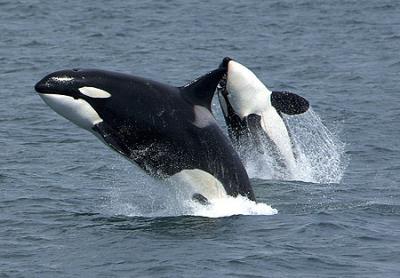
~~~~~~ X ~~~~~~
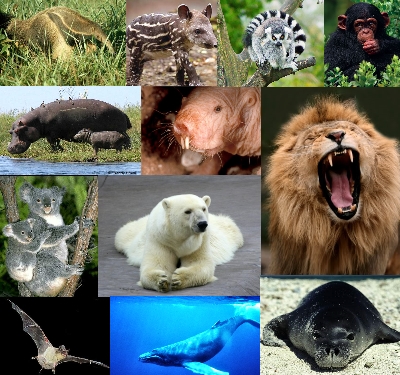
Image References
www.nationalgeographic.com
www.photobucket.com
Google Images
Mammals - Suggestions
No comments found.
